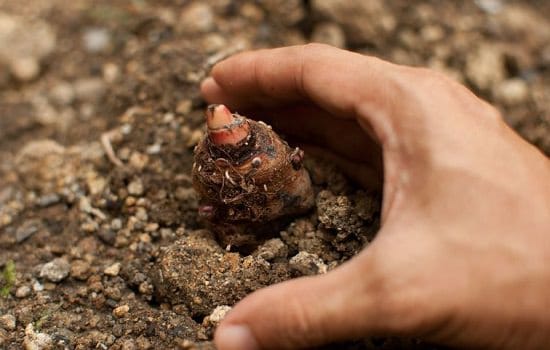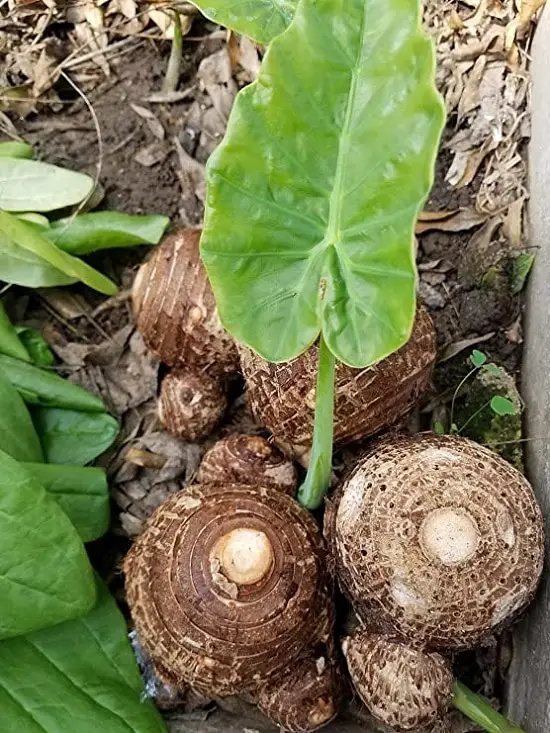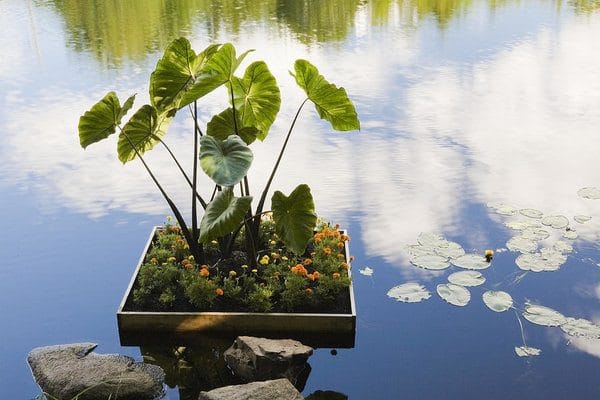If you want to grow tropical houseplants and wondering How to Plant Elephant Ear Bulbs easily, then you are at the right place!
Elephant ear plants bring a bold look to any interior or landscape, with their huge heart-shaped leaves. These tropical, big leaf plants, thrive in partial to full sun with frequent watering and right soil conditions. Let’s learn everything about how to plant elephant ear bulbs!
Botanical Name: Colocasia
USDA Hardiness Zones: 9-11
Check out our article on best large foliage houseplants here!
________________________________________________________________________
Planting Elephant Ear Bulbs

Select a large and healthy bulb (tuber) of 5-7 inches, with a dry outer layer, as these are going to develop in big leaves and strong stems. On the other hand, tiny tubers will turn into a small foliage plant.
For planting, dig a hole about 4-5 inches deep and place the bulb in the hole carefully and cover it with soil completely. Remember, the pointed end of the bulb must face an upward direction. Water thoroughly.
Also Read: Elephant Ear Plant Types
________________________________________________________________________
Container Size
If you are growing them individually, 6-8 inches pot, is going to be ideal. For reference, the diameter of the bulb is what its spread is. For example, a 5 inch bulb will have a 5 inch spread.
Requirements for Planting Elephant Ear Bulbs

Temperature
As they are tropical plants, they simply cannot bear frost. Plant when the day temperature is above 18 °C (70 °F).
Sun Exposure
Elephant ear plants thrive in partial sunlight. Choose a spot that receives 3-5 hours of direct light. In the absence of enough sun, its leaves turn yellow. However, too much sunlight can also burn the leaves. For hot climates, you can grow them in shade as well.
Soil
The plants do well in moist and loamy soil, rich in organic matter. You can also add compost. Using 1-2 inches of organic mulch, on topsoil, is also a good idea.
Watering
Always keep the roots moist and never let them dry out completely. The plants can be stressed and die out when they don’t get enough water. However, do not overwater the plants as it may cause root rot.
Humidity
Native to the tropical regions, these plants prefer high humidity. Choose an area where the soil holds enough moisture. However, proper drainage is also necessary, as it helps in preventing root rot.
Fertilizer
Elephant ears love extra nutrients and do well when fed right. Using all purposes, liquid fertilizer, every 3-5 weeks, is going to do just fine.
Trimming and Pruning
The plant is going to keep on producing new leaves throughout the growing season. Keep an eye on wilted and browning leaves. Prune them off at the base of the plant.
_______________________________________________________________________
Planting Tips for Elephant Ear Plants

- Dig holes at least 3-4 feet apart, while planting multiple plants, as a full-grown elephant ear plant acquires large leaves and spreads quite quickly.
- Avoid overcrowding by dividing and replanting them.
- Elephant ear plants cannot tolerate frost; thus, you can move them in containers during winters and take them indoors, keeping them as a houseplant. Make sure that they’re exposed to enough sunlight. Water them frequently indoors too.


